In 2006, a year after Hurricane Katrina brought New Orleans to its knees and six years before Hurricane Sandy transformed New York City's famed subways into fetid swimming pools, a group of Palo Alto's leading environmentalists began a series of meetings to discuss ways the city could fight global warming.
The Green Ribbon Task Force, appointed by then-Mayor Judy Kleinberg, was among the biggest and most ambitious citizen committees in a city with no shortage of them. The 58-member group began meeting in May and, by December, issued a report calling for Palo Alto to undertake a wide range of actions to reduce greenhouse-gas emissions, including promoting public transportation, creating a more stringent green-building code, and reducing emissions by the city's vehicle fleet. Among its loftiest recommendations was achieving "climate neutrality" in the city-owned Utilities Department by 2020.
"Local actions are critical to achieving state goals to address a global problem," the task force report stated. "Local government actions taken to reduce greenhouse-gas emissions and increase energy efficiency can provide multiple local benefits by decreasing air pollution, creating jobs, reducing energy expenditures, and saving money for the local government, its businesses and its residents. The challenge is to take tangible steps and lead the way in encouraging businesses and residents to do the same."
Since the report came out, Palo Alto has been not only diligent but aggressive in pursuing its recommendations. The city has strengthened its green-building code, installed electric-vehicle charging stations in public garages, began requiring downtown developers to offer Caltrain passes to building tenants; and explored ways to bring smart-meter technology to electricity customers. The city's renewable-energy program, PaloAltoGreen, continues to be the gold standard of the green movement, with a participation rate of about 21 percent -- the highest in the nation.
This year, Palo Alto's battle against global warming will hit one of its most significant milestones yet when the city adopts a plan for making its entire electricity operation "carbon neutral." The term has varying definitions, depending on which body is doing the defining, but it generally means that the city's electricity portfolio would have net zero emissions of greenhouse gases by purchasing from clean power sources and buying offsets for standard "brown" electricity. In November, the City Council approved an official definition of "carbon neutral" and in December, the Utilities Advisory Commission signed off on a staff plan to reach this rare and prestigious plateau this year.
If the council approves the plan (it is scheduled to discuss it in March), Palo Alto would join an elite cadre of cities leading the fight against climate change through emission-free electricity. Seattle City Light, which gets most of its energy from hydroelectric sources, reached the goal in 2005, becoming the first major utility in the nation to do so. Last year, Austin achieved its goal of powering all city facilities with renewable energy and is working to make transportation carbon neutral as well by 2020. Aspen, Colo., like Palo Alto, is pursuing carbon neutrality exclusively for its electric operation and is slated to get there by 2015.
In the process of getting to carbon neutrality, Palo Alto has upended some deeply held assumptions about what it takes for a city to go completely green with its electricity -- namely, that it takes many years to achieve and that it saddles customers with significantly higher bills. Palo Alto customers currently pay far less for electricity than those in areas served by PG&E (as of November, the median residential electric bill in Palo Alto was $48.49 per month, compared to $59.98 for PG&E customers). If things go as planned, the Utilities Department estimates that the city's leap to carbon neutrality will cost the average ratepayer between $2.60 and $4.20 more a year ("year" is not a misprint.).
Given the low financial impact and the high prestige of being carbon neutral, the city's Utilities Advisory Commission had few reservations about signing off on the staff proposal. James Cook, who chairs the group, said at a Dec. 5 meeting that the staff plan would not only reduce carbon emissions by more than 100,000 metric tons per year but would also "provide leadership in our area and in the state and, hopefully, move others to do the same."
"In some ways, you can say it's a small step for this city but a big step for our state and for our country and for our planet," Cook said.
---
Climate change may be a global problem, but global solutions have proven elusive over the past decade. Since December 2009, 167 nations have signed the Copenhagen Accord (this includes the United States, which helped draft the document), which recognized climate change as "one of the greatest challenges of the present day" and argued that "actions should be taken to keep any temperature increases to below 2 degrees Celsius (about 3.6 degrees Fahrenheit)" -- the conventionally accepted limit for how much heat the Earth can handle before things really get hairy. (In an often-cited July article in the Rolling Stone, climate-change journalist Bill McKibben questioned the 2-degree target and cited numerous leading scientists who argued that it is far too lenient. He also quoted a spokesman for small island nations who said that, with a 2-degree rise, some countries "will flat-out disappear.")
While the Copenhagen Accord cites the signatories' "strong political will to urgently combat climate change," the document is widely seen as a toothless agreement with painfully modest ambitions. Most critically, it does not contain any legally binding commitments for reducing emissions.
Given the lack of real action on climate change on the part of the United Nations or in Washington, D.C. (President Barack Obama's election in 2008 did little to raise the issue's profile), the fight has been left up to individual states, cities and companies.
Palo Alto has stepped up, with the City Council putting "environmental sustainability" on its list of official priorities every year since 2007. It's a designation that's amounted to more than hot air, since the city reduced the community's greenhouse gas emissions by an estimated 15 percent between 2005 and 2012. These days, the city is actively promoting new programs for local solar generation, unveiling smart-meter software that allows customers to track the impact of their behavior on their electricity bills and considering participating in the Cool Climate Challenge, under which teams of global-warming evangelists would spread the green gospel to the neighborhood level in hopes of changing behavior one household at a time.
In discussing the city's role in the global battle against climate change, Palo Alto officials often channel New York Times columnist and leading globalization cheerleader Thomas Friedman, who in his 2008 bestseller, "Hot, Flat, and Crowded," made an impassioned plea for tackling global warming. Friedman wrote that "a strategy that depends on outmining, outdrilling, outconsuming, outexploiting your own resources or a global commons -- without having to pay any of the externalities -- is not going to offer a sustainable competitive advantage any longer." He called for "a different kind of an environment," one in which "you, your company, and your community are constantly thinking about how to generate more growth, more mobility, more housing, more comfort, more security, more enjoyment, and more packaging from the most innovative use of the cleanest electrons and fewest resources."
The Palo Alto council -- which in 2009 held a special City Hall screening of a video in which Friedman talked about climate change -- has gone beyond California's state requirements in pursuing renewable energy. Last May, when the council directed staff to come up with a plan for carbon-neutrality by the end of the year, Councilman Larry Klein called climate change "the great moral issue of our time." Klein also said he was disappointed by the fact that the city's residents -- who are rarely shy about making themselves heard on neighborhood issues such as parking shortages or unsightly cell antennas -- have been less vocal when it comes to an issue with such global implications.
"We have to keep plugging away and telling our citizens that this is the most serious issue of our lives," Klein said. "I'm really happy that we're taking this step, and I'm hoping we can take several more."
Other council members share Klein's passion for leading the battle against global warming. In his February "State of the City" speech, then-Mayor Yiaway Yeh highlighted the city's energy-efficiency programs and the city's pursuit of a carbon-neutral portfolio as among the year's most exciting initiatives.
"It's a very aggressive policy," Yeh said, referring to a carbon-neutral portfolio. "There are very few electric utilities, particularly municipal electric utilities, that have achieved a carbon-neutral portfolio," Yeh said. "And Palo Alto is on the cusp."
---
The biggest surprise in the discussion over carbon neutrality isn't how difficult Palo Alto's trek toward the exclusive plateau has been but rather how smooth. In most major green initiatives, all the low-hanging fruit are plucked early, and every subsequent step requires more effort and resources. In this case, the Utilities Department is confident the city can jump to carbon neutrality almost immediately and, remarkably, with very little impact to ratepayers.
Palo Alto has many inherent advantages when it comes to pursuing renewable energy. It also doesn't hurt that thousands of Palo Alto residents are willingly paying an extra premium every month to support renewable energy. And the fact that the city owns its utilities means that it has much more power and flexibility than its neighbors in pursuing clean energy sources and experimenting with new modes of generation.
Palo Alto's electric operation began on Jan. 16, 1900, relying on a steam engine for all of its power. Fourteen years later, the steam engine was replaced by a diesel one. Today, the city draws power from all four classical elements -- earth, water, air and fire. Palo Alto draws about half of its electric load from carbon-free hydroelectric projects, which don't qualify under California law as "renewable." Most of the water-generated energy comes from the Calaveras Hydroelectric project, which the city has co-owned with other municipal utilities since the early 1980s, and the federal Western Area Powers Agency.
Around the time that it went hydro, Palo Alto also joined other municipalities utilities in the Northern California Powers Agency in investing in geothermal energy, which is expected to provide about 3 percent of the city's electricity load in 2015.
In more recent years, the city signed contracts with generators of other types of renewable energy -- landfill-gas facilities in Half Moon Bay, Watsonville and Pittsburg and wind farms in Solano County. Altogether, these renewable-energy sources account for 23 percent of the city's electric load in 2013 (the figure is expected to rise to 33 percent by 2015, along with the $91 million solar-energy contract that the council approved in November with the company Brannon Solar) and will account for about 33 percent of the city's load by 2015 -- up from about 18 percent in 2010 and 23 percent in 2013. The rest of the city's electricity -- about 25 percent -- comes from the wholesale market, which includes standard, fossil-fueled "brown" energy.
The city's new plan for achieving carbon neutrality calls for offsetting this brown energy in the short term by purchasing renewable-energy certificates (RECs), a common mechanism used by utilities and companies to support production of renewable energy in the absence of contracts for such clean power. These certificates are typically tied to green-energy projects elsewhere in the state and around the country. The city's hugely successful PaloAltoGreen program, for instance, uses voluntary contributions from ratepayers to purchase RECs that support wind energy in Wyoming and, to a smaller extent, solar projects in California.
Different utilities have different philosophies about whether purchasing RECs really constitutes going "carbon neutral." In Aspen, for example, the City Council decided that these certificates are not in the spirit of what the city is trying to accomplish. In Palo Alto, officials plan to use them to fill the green-energy gap between 2013 and 2016, while the city enters into new contracts for renewable energy. By 2017, the city plans to get about half of its energy from renewable sources, with the other half still coming from carbon-free hydroelectric projects. Only then will the portfolio truly be carbon neutral, by any definition.
Given that the electric supply is already mostly carbon-free, one member of the city's Utilities Advisory Commission wondered whether the city's latest step toward "carbon neutrality" has any real significance. Commissioner Steve Eglash said the city is already on a path toward carbon neutrality, whether or not it proceeds with the more ambitious proposal to get there immediately. The new plan, he said "isn't doing very much because we're already there."
"I'm concerned that the reason why it's so cheap is because the benefit is so small," Eglash said at the Dec. 5 meeting.
But he voted with the rest of the commission to support the staff plan, with his colleagues noting that the reason the last step seems so simple is because the city has already come such a long way in recent years.
"Why be 'almost there' when you can get there with a relatively minimal additional effort?" Commissioner Asher Waldfogel asked.
His colleagues agreed, with Jonathan Foster noting that what "seems very easy to accomplish now was not so easy to accomplish three or four years ago, or even one year ago."
"I think we are fortunate that it has become easier to accomplish," Foster said. "It's sort of like climbing Mount Everest doesn't seem so hard once you're at 28,500 feet. And we're fortunate that we've gotten a little boost in getting there."
---
For Palo Alto, going green has come at a price, albeit a price most residents appear to be willing to pay. The city has been getting its renewable energy at a bargain in recent years, thanks in large part to long-term contracts it signed years ago, Resource Planner Monica Padilla said at an October meeting of the council's Finance Committee.
"We have original landfill gas and wind contracts that were very reasonably priced," Padilla said.
The city hopes to snag more bargains next year, when it expands its solar portfolio. Earlier this year, Palo Alto put out a bid for new renewable-energy contracts and received proposals from a record 57 companies offering 92 projects, 62 of which were for solar power. James Stack, a resource planner at the Utilities Department, noted at a recent meeting of the utilities commission that solar prices have been dropping in recent years and that now is a good time to buy. Stack said staff has narrowed down the proposals to three, which will be presented to the council for approval in the spring.
The buyer's market should spell good news for Palo Alto residents, for whom the cost of the switch to renewable energy should be much more modest than for PG&E customers. And according to a recent survey, most Palo Alto residents have no problem paying a little extra. The survey, which the Utilities Department issued last year, showed only 27 percent of the 948 residential respondents would not be willing to pay more for renewable energy. Of the 73 percent who said they would pay more, 9 percent said they would be willing to pay $2 more per month, 22 percent said $5 more, 23 percent said $10 more and 18 percent said more than $10. (It's worth noting that 58 percent of the respondents were PaloAltoGreen customers. The fact that the city's greenest customers were more likely to respond to the survey may overstate somewhat the customers' appetite for paying more for renewable energy.)
Commercial customers proved more reluctant, with 17 of 27 respondents (68 percent) saying whey would not be willing to pay any more for renewable energy. Still, staff saw the results as a good sign.
"Most customers who said they're willing to pay are willing to pay 12 times more than what we're recommending," Padilla told the utilities commission.
In October, just before the council's Finance Committee approved the staff-recommended definition of "carbon neutral," Councilman Pat Burt lauded the city's ability to raise its renewable-energy standards without significantly raising electric rates. He compared the city's utility to PG&E, which expects to significantly raise rates to meet state requirements for renewable energy. (In 2008, then-Gov. Arnold Schwarzenegger signed an order requiring all electric utilities to get 33 percent of their energy from renewable sources by 2020. Gov. Jerry Brown recommitted to this goal in April 2011, when he signed SBX1-2 into law.)
Palo Alto Utilities Director Valerie Fong told the committee that she has heard directly from some investor-owned utilities that "they are really anticipating a lot of upward rate pressure because of their renewables." Burt observed that the city's renewable-energy programs have been more cost effective than those of the utility giant, which serves most neighboring communities.
"We upped our program; they upped theirs. So we have an even more aggressive program, and we're coming in under budget and well below their costs," Burt said.
---
Walt Hays and Bruce Hodge need no help seeing the big picture. Hays, an environmentalist and retired attorney who chaired the 2006 Green Ribbon Task Force, has been calling for the city to take aggressive actions on climate change for more than a decade. Hodge, an environmentalist ever since the first Earth Day, served on the task force and subsequently founded the group Carbon-Free Palo Alto to lobby local officials to pursue the policy.
To them, the seemingly small step of going from really green to completely "carbon neutral" is a giant stride, a culmination of years of work by Utilities Department staff and community volunteers. And even if the step has a heavy symbolic component, the symbolism is powerful because it will set an example for other cities to follow.
"When we had our Green Ribbon Task Force, all of a sudden all the surrounding cities did something similar," Hays said at the Dec. 5 meeting of the utilities commission. "We have a role to play here. The sooner we take action and the sooner we get to zero, the better model we are, is the way I look at it."
Hodge agreed and called the commission's adoption of the staff plan for reaching carbon neutrality "the moment many of us have been waiting for."
"Beyond the immediate benefits to Palo Alto, this plan will send a message of hope and change to a much larger audience. This will be seen as a bellwether for change, causing other citizens, cities and utilities to re-examine their assumptions and perhaps to embark on their own solutions to carbon-free electricity. It matters more than you might think."
Bret Anderson, who served on the Green Ribbon Task Force's Transportation Subcommittee, said the new carbon-neutral portfolio will also dovetail nicely with the city's promotion of electric vehicles.
"When I'm thinking of, say, purchasing a plug-in hybrid or an electric car, it's important to me to know my electricity is green," Anderson told the utilities commission Dec. 5. "If I don't, the car is really not much better from a carbon-footprint standpoint than a regular, say, high-mileage gasoline-powered car."
In a recent interview, Hodge recalled 2006 as a time of great excitement for the city's robust green community. Civic leaders, city staff and officials from local tech giants such as IDEO and HP came together as a task force to brainstorm and share ideas. The result, he said, was "a lot of positive energy."
Since then, Hodge has tried to keep the momentum going by launching a group, Carbon-Free Palo Alto, which has been lobbying council members to stay aggressive in fighting climate change. An electric portfolio seemed like a good place to start, he said.
"We thought there was an advantage in that we had our own utility and therefore citizen input can make a difference," Hodge said.
The Utilities Department's push toward carbon neutrality has been a great success, he said. The city, he said, has "really outperformed just about every municipal utility in the state in terms of setting and achieving renewable energy goals." But Hodge has no illusions about the challenge of engaging the broader public on the topic of climate change -- a necessity given the vast amount of work yet to do.
A word like "sustainability" may be a perennial council priority, but it's a tough concept for an average resident to wrap his or her head around, Hodge said.
"Back on the first Earth Day, the general thinking was that we have some water-pollution problems, air problems, maybe we have an issue with people throwing garbage out of cars. If we can just address those issues, that would be a good thing to do," Hodge said. "If you look at what happened, all the environmental issues morphed into gigantic, systemic, global, interconnected problems that are also deeply interconnected with our economic system."
By the task force's estimation, electricity was responsible for only about 23 percent of the city's carbon emissions in 2007, with natural gas making up another 26 percent and transportation accounting for 51 percent. But electricity, Hodge said, is a good start.
"We definitely need more people becoming engaged with this issue," he said. "It's one of the things I'm hoping to do with the Palo Alto group -- if this initiative succeeds, to use it as a springboard."
Related story:


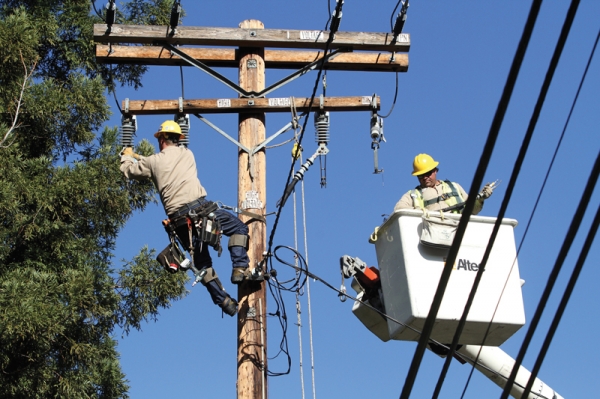
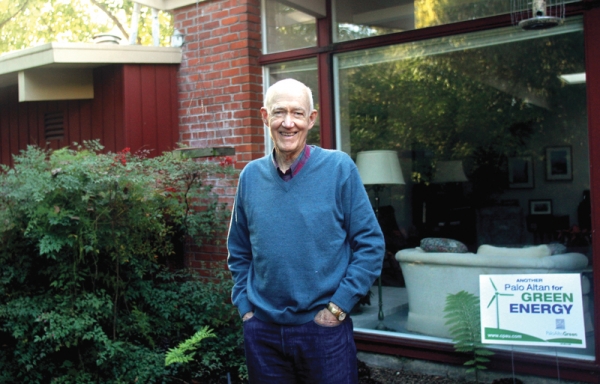
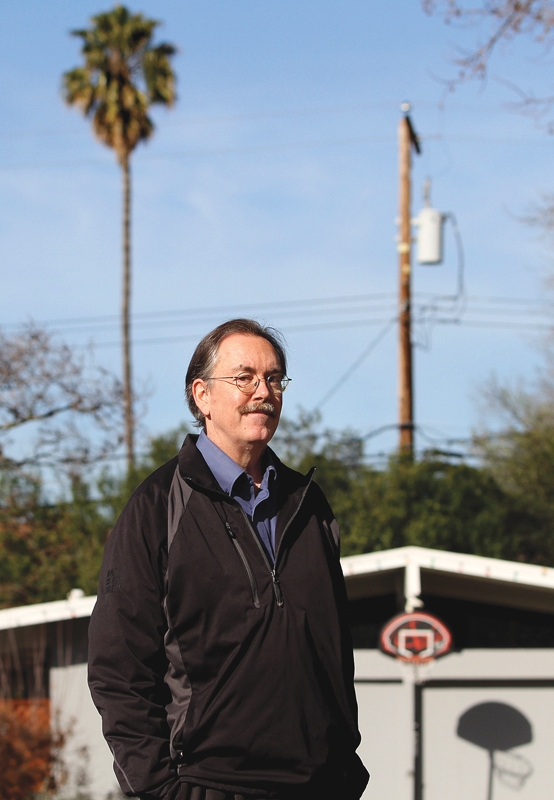

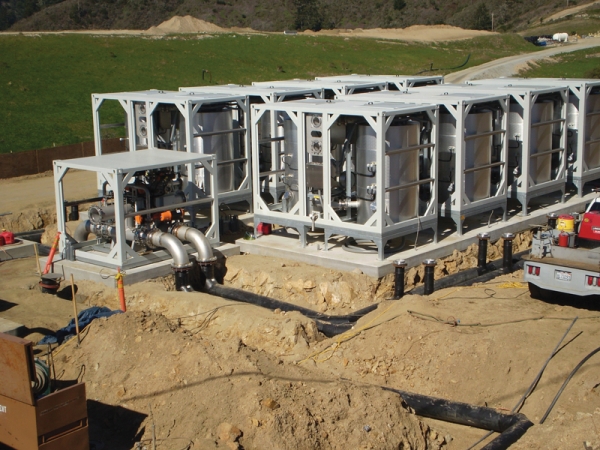
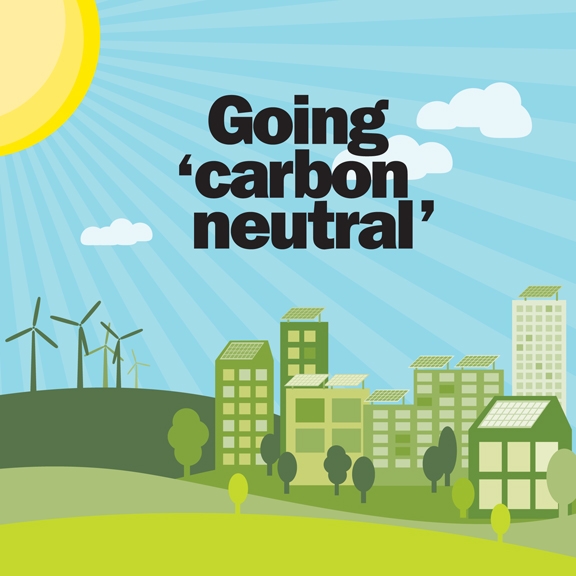


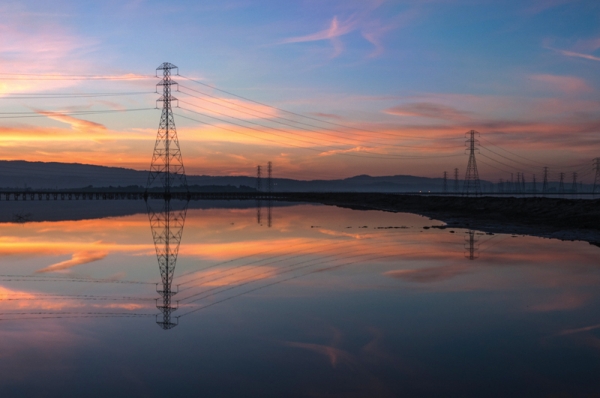
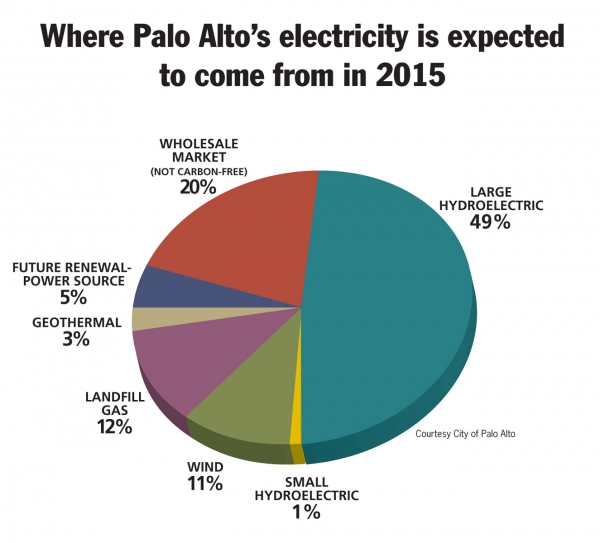
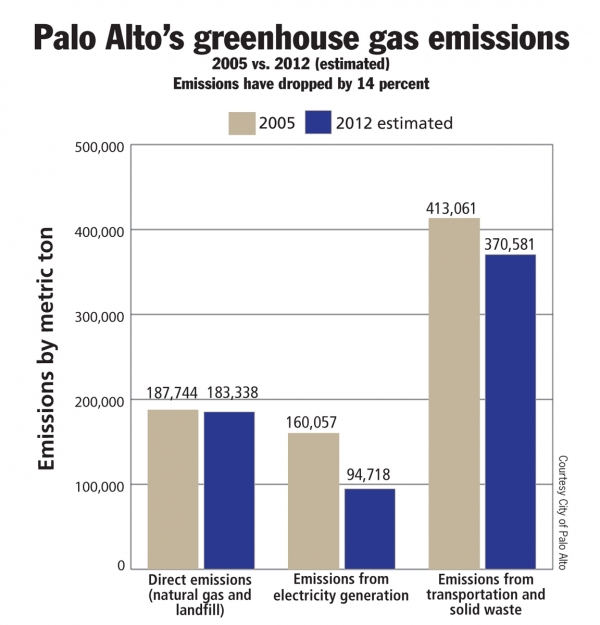


Comments
Midtown
on Jan 18, 2013 at 12:48 pm
on Jan 18, 2013 at 12:48 pm
Good News re: electricity!
Another Palo Alto neighborhood
on Jan 18, 2013 at 2:42 pm
on Jan 18, 2013 at 2:42 pm
> "In some ways, you can say it's a small step for this city
> but a big step for our state and for our country and for
> our planet," Cook said.
> Councilman Larry Klein called climate change
> "the great moral issue of our time."
What a KROK! Has Larry Klein stopped driving his big car? Has he required all of this law firm’s clients to use public transportation when they come to his office to consult on business matters? Has he promoted the idea that all City employees be required to use public transportation when coming/going to work?
No!
The idea that Palo Alto (or Palo Altans) are going to stop global warming is ludicrous. And looking back at the big moral issues of our time, and looking to see what Palo Altans did to advance those causes—we only have to look into the 1970s when Palo Altans were opposed to fighting Communism in South East Asia. They had no problem at all with the tens upon tens of millions of people who were killed in Mao’s China, or Pol Pot’s Cambodia. No .. to a peep from Palo Altans ..
[Portion removed by Palo Alto Online staff.]
Another Palo Alto neighborhood
on Jan 18, 2013 at 3:22 pm
on Jan 18, 2013 at 3:22 pm
Every few months Palo Alto politician make environmental claims and proposals but it seems as if the City Government and Schools didn't get the message. Instead buying more electric power from "green" sources, how about using less of it through simple conservation or generating with Solar PV on your own buildings? And instead of stonewalling private renewable energy projects in Palo Alto, how about expediting them?
This stuff reads like politician moving their lips when you compare it to the actual results.
Green Acres
on Jan 18, 2013 at 8:17 pm
on Jan 18, 2013 at 8:17 pm
Two suggestions:
1. Repeal the Utility Users Tax. UUT funds flow directly into the general fund and have nothing to do with the utility or energy. The funds end up supporting more govt. union jobs/pensions and city council pet projects that again have nothing to do with the utility or energy. Some of the saved funds could be used to shift our remaining generation to renewable sources if that is what the public wants, and the rest returned to ratepayers.
2. Remove the recently added $500 fee for permitting residential PV systems. In its search for revenue, the city has created a disincentive to anyone trying to deploy solar.
Barron Park
on Jan 18, 2013 at 9:25 pm
on Jan 18, 2013 at 9:25 pm
"Most customers who said they're willing to pay are willing to pay 12 times more than what we're recommending," Padilla told the utilities commission.
Twelve times? Even at $30/month, this is $360/month. We try to minimize our electricity usage, but to date our bill has averaged >$40/month this winter. Must be a misprint.
If we must use scarce money for any energy up grade, let's install solar in every home at cost.
Fairmeadow
on Jan 19, 2013 at 4:09 pm
on Jan 19, 2013 at 4:09 pm
> Repeal the Utility Users Tax.
This is appealing, but not necessarily the best thing to do. It is correct that this money flows into the General Fund, and then into salaries/benefits—but it could be targeted for Infrastructure replacement—which needs to be replaced, over time. The current City Council wants to pass more bonds, which will appear on our property taxes—trying to hide them from us.
Let’s consider a couple possibilities:
1) Require that the Cubberley Center become self-sufficient, by raising the rents to the point that the occupants pay for the approximately $6M/year lease from the PAUSD.
2) The current $11+M from the UUT would be put into reserve accounts that would be invested at whatever modest, but safe, returns the City can manage. Under such a scheme, such an Infrastructure Reserve Fund could grow to about $132M in 10 years, and $305M in 20 years.
Now—there are quite a few issues that would affect such a plan, so let’s not get to excited about the missing details at the moment—let’s just consider the possibilities that the UUT be targeted for Infrastructure—and not padding the salaries of City employees.
Palo Verde
on Jan 19, 2013 at 4:48 pm
on Jan 19, 2013 at 4:48 pm
@bill, earlier in the article they said "If things go as planned, the Utilities Department estimates that the city's leap to carbon neutrality will cost the average ratepayer between $2.60 and $4.20 more a year ("year" is not a misprint)."
12 times that figure would be less than $60 per year or $5 per month.
I'm not sure whether I believe any of it.
Crescent Park
on Jan 20, 2013 at 6:11 pm
on Jan 20, 2013 at 6:11 pm
Some reactions:
1. Overall kudos to the spirited Green Ribbon Task Force (GRTF) effort.
2. I was disappointed to read yet another PA Weakly article that failed to set relevant PA/regional/state climate context. This continues to puzzle, given that The Editor understands the context:
Weekly Editor Jay Thorwaldson started as a Palo Alto Times reporter in 1966, has covered ABAG, and has encyclopedic knowledge of historical Palo Alto land use decisions. Jay wrote a 1968 article on Palo Alto's jobs/housing imbalance, with 2.4 jobs for every household in those days. Jay’s take on Palo Alto’s current jobs/housing imbalance: "Well-intentioned and environmentally conscious Palo Alto has restricted housing to create a terrible environmental situation with long commutes wasting fuel. It's an insoluble situation. Long commutes damage the social fabric and create lower quality of life. Workers are forced to commute from Manteca, etc. Palo Alto has a drawbridge mentality. Compounding the insolubility, objections raised by neighborhood associations are legitimate."
The background that writer Gennady Sheyner should have provided: State Senate Bill 375 (SB375) builds on AB32 by adding the nation's first law to control greenhouse gas emissions by curbing sprawl and linking land use to climate protection. The state’s press release stated: "Californians need to rethink how we design our communities. SB 375 does this by providing emissions-reduction goals around which regions can plan - integrating disjointed planning activities and providing incentives for local governments and developers to follow new conscientiously-planned growth patterns. ARB (California state Air Resources Board) will also work with California's 18 metropolitan planning organizations to align their regional transportation, housing and land-use plans and prepare a 'sustainable communities strategy' to reduce the amount of vehicle miles traveled in their respective regions and demonstrate the region's ability to attain its greenhouse gas reduction targets. Spending less time on the road is the single-most powerful way for California to reduce its carbon footprint." Then, Sheyner could have pointed out Palo Alto’s climate disconnect.
3. In 2006, there was a missed opportunity when GRTF decided not to add smart growth and land use to the effort. While it is obvious that Palo Alto is a part of the Bay Area, rather than being an island, it is not standard procedure for elite suburb volunteer-led climate efforts to think in this manner.
4. PA Council continues to make embarrassing statements (with "magical" theories) about smart growth and climate.
There is a widespread allegation that a "climate hero" councilmember led an effort to overturn the state’s Regional Housing Needs Allocation process (a cornerstone of climate protection). Luckily this effort failed, because it would have dramatically increased CA GHG emissions. There is an opportunity for the Weakly to expose our local Lance Armstrong of climate heroism.
More on the Palo Alto Housing Element and SB375 can be found in a yahoo groups post: Web Link